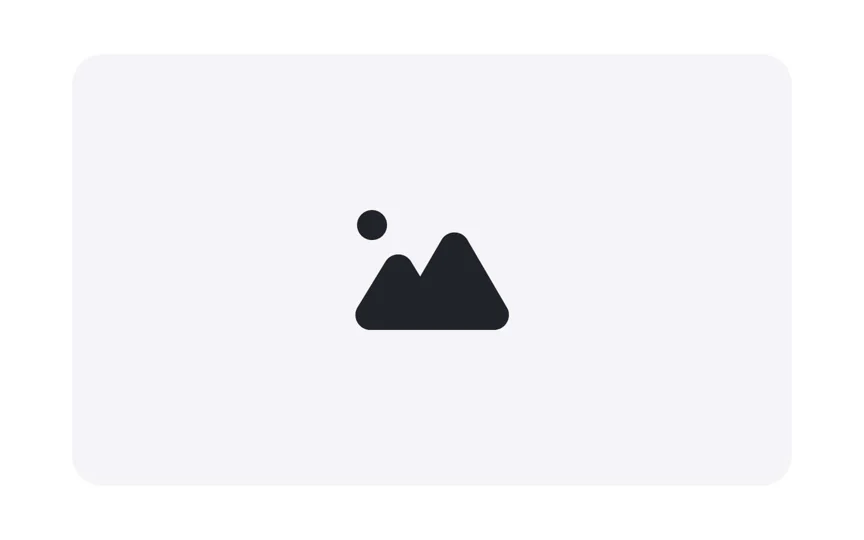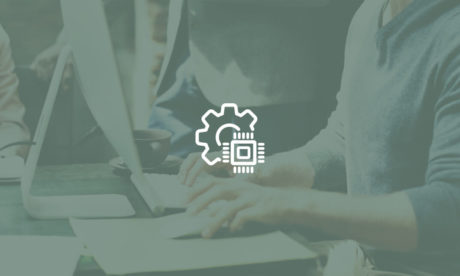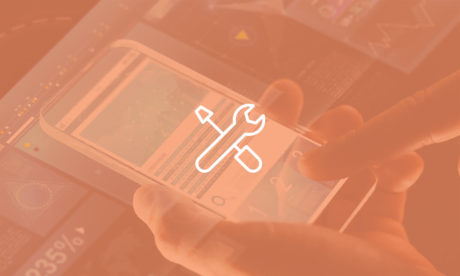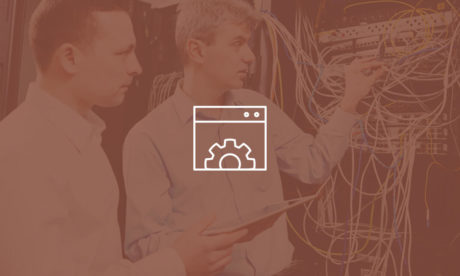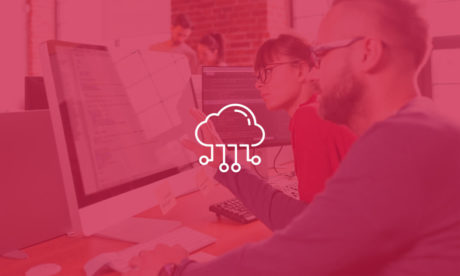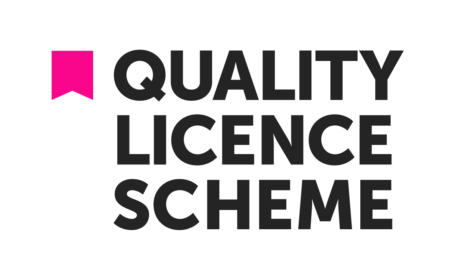Description:
The bundle course can be the starting point of your IT career. Most of the IT professionals start their career as a support. In the IT Support Technician Diploma course, you will gain a complete mastery about the basics of IT support.
As this is a bundle course, you will get the knowledge and information about the following topics:
-
- CompTIA IT Fundamentals that includes the basic software and hardware concepts, configuring network access, working with files, folders, applications, etc.
- CompTIA A+ includes problems related to troubleshooting, networking and operating system.
- CompTIA Network+ – teaches you to design, configure, manage and troubleshoot any wired and wireless network
- MCSA Windows 7
- MCSA Windows 8
- MCSA Windows 10
- Cisco CCENT – provides information to install, operate, and troubleshoot a small enterprise branch network along with basic network security.
In short, you will gain an overall knowledge and can start your job as an IT technician or support.
Assessment:
- At the end of the course, you will be required to sit for an online MCQ test. Your test will be assessed automatically and immediately. You will instantly know whether you have been successful or not.
- Before sitting for your final exam you will have the opportunity to test your proficiency with a mock exam.
Certification:
- After completing and passing the course successfully, you will be able to obtain an Accredited Certificate of Achievement.
- Certificates can be obtained either in hard copy at a cost of £39 or in PDF format at a cost of £24.
Who is this Course for?
IT Support Technician Diploma is certified by CPD Qualifications Standards and CiQ. This makes it perfect for anyone trying to learn potential professional skills.
As there is no experience and qualification required for this course, it is available for all students from any academic background.
Requirements
Our IT Support Technician Diploma is fully compatible with any kind of device. Whether you are using Windows computer, Mac, smartphones or tablets, you will get the same experience while learning. Besides that, you will be able to access the course with any kind of internet connection from anywhere at any time without any kind of limitation.
Career Path
After completing this course you will be able to build up accurate knowledge and skills with proper confidence to enrich yourself and brighten up your career in the relevant job market.
Course Curriculum
| Module 01 | |||
| IT Support Technician | 00:15:00 | ||
| What is an Operating System | FREE | 00:48:00 | |
| Configuring the Operating System | 00:06:00 | ||
| What is an Application | 00:10:00 | ||
| Using Control Panel | 00:18:00 | ||
| Hardware and Peripherals | 00:07:00 | ||
| Storage | 00:12:00 | ||
| Connectivity Devices | 00:05:00 | ||
| Network Components | 00:09:00 | ||
| Software and Concepts | 00:10:00 | ||
| Licensing | 00:06:00 | ||
| Using Software | 00:07:00 | ||
| Software Tools | 00:10:00 | ||
| Software | 00:14:00 | ||
| Hardware, Devices, and Peripherals | 00:06:00 | ||
| Backup and Restore | 00:03:00 | ||
| Module 02 | |||
| Firmware | FREE | 00:07:00 | |
| BIOS Configuration Options | 00:25:00 | ||
| Motherboard Sizes Form Factors | 00:14:00 | ||
| The Motherboard | 00:12:00 | ||
| AMD CPU Socket Types | 00:11:00 | ||
| Expansion Cards | 00:13:00 | ||
| Bus Speeds | 00:28:00 | ||
| Memory | 00:06:00 | ||
| Types of RAM | 00:07:00 | ||
| Ports | 00:11:00 | ||
| SCSI Connections | 00:14:00 | ||
| Audio Video Connections | 00:26:00 | ||
| Storage Devices | 00:17:00 | ||
| Hard Drives | 00:17:00 | ||
| Media Capacity | 00:21:00 | ||
| CPU Types and Characteristics | 00:14:00 | ||
| Physical Connections USB | 00:11:00 | ||
| Physical Connections VGA | 00:11:00 | ||
| Wireless Connections Bluetooth | 00:06:00 | ||
| Power Supply Specifications | 00:16:00 | ||
| What is a Standard Client | 00:13:00 | ||
| Audio Video Editing Workstations | 00:08:00 | ||
| Display Device Types | 00:20:00 | ||
| Backlighting | 00:12:00 | ||
| DVI to HDMI | 00:13:00 | ||
| Standard Input Device Types | 00:16:00 | ||
| Expansion Card Types | 00:11:00 | ||
| Multimedia Devices | 00:11:00 | ||
| SOHO Networks | 00:17:00 | ||
| WPS | 00:16:00 | ||
| Encryption | 00:14:00 | ||
| Printers | 00:02:00 | ||
| Printer Technologies Topic B Inkjet Printers | 00:13:00 | ||
| Technical Printer Components | 00:09:00 | ||
| Local and Network-Based Printers | 00:22:00 | ||
| Network Interface Card Characteristics | 00:20:00 | ||
| Fiber Optic Cables | 00:14:00 | ||
| TCP IP | 00:14:00 | ||
| IP Address Classes | 00:14:00 | ||
| Addressing Schemes | 00:17:00 | ||
| Ports | 00:09:00 | ||
| LDAP | 00:04:00 | ||
| Standards | 00:03:00 | ||
| Setting up your Router | 00:10:00 | ||
| Define Appropriate NAT Policies | 00:16:00 | ||
| LANs | 00:08:00 | ||
| Network Topologies | 00:11:00 | ||
| ISPs | 00:06:00 | ||
| Cable Testers | 00:13:00 | ||
| Laptops | 00:09:00 | ||
| Laptop Expansion Options | 00:10:00 | ||
| Auto-Switching and Fixed Input Power Supplies | 00:09:00 | ||
| What is Mobile Technology | 00:09:00 | ||
| Mobile Device Features | 00:09:00 | ||
| Bluetooth Configuration Method | 00:08:00 | ||
| Mobile Device Connection Types | 00:10:00 | ||
| Troubleshooting Mobile Devices | 00:11:00 | ||
| Troubleshooting Theory | 00:16:00 | ||
| Boot to Incorrect Device | 00:16:00 | ||
| PC Indicator Lights | 00:10:00 | ||
| Repair vs. Replace | 00:10:00 | ||
| Drive and Array Troubleshooting Tools | 00:06:00 | ||
| Common RAID Array Issues | 00:17:00 | ||
| Common Video and Display Issues | 00:01:00 | ||
| Common Network Issues | 00:12:00 | ||
| Common Printer Troubleshooting Tools | 00:14:00 | ||
| Microsoft Windows | 00:12:00 | ||
| Microsoft Windows Features | 00:17:00 | ||
| Other Operating Systems | 00:15:00 | ||
| Installation Types | 00:14:00 | ||
| Customizing System Options | 00:19:00 | ||
| The Command Prompt | 00:12:00 | ||
| Administrative Tools | 00:41:00 | ||
| Task Manager | 00:28:00 | ||
| Memory Diagnostic Tool | 00:46:00 | ||
| The Control Panel | 00:11:00 | ||
| Internet Options | 00:10:00 | ||
| Types of User Accounts | 00:11:00 | ||
| Computer My Computer | 00:13:00 | ||
| Permissions | 00:31:00 | ||
| System | 00:10:00 | ||
| Workgroups | 00:20:00 | ||
| Network Connection Types | 00:18:00 | ||
| Data Backup and Restoration | 00:11:00 | ||
| Scheduling Tasks | 00:26:00 | ||
| Patch Management in Mac OS X and Linux | 00:09:00 | ||
| Screen Sharing | 00:06:00 | ||
| Mac OS Multitouch Gestures – Touchscreen | 00:09:00 | ||
| What is Virtualization | 00:08:00 | ||
| Virtual Desktop Infrastructure | 00:12:00 | ||
| SaaS (Software as Service) | 00:09:00 | ||
| Server Roles | 00:12:00 | ||
| Open Source Software | 00:03:00 | ||
| Mobile Device Hotspot | 00:10:00 | ||
| Malware | 00:09:00 | ||
| Social Engineering | 00:13:00 | ||
| Physical Security | 00:14:00 | ||
| Hard Drive Sanitation | 00:14:00 | ||
| User Education | 00:26:00 | ||
| Users and Groups | 00:11:00 | ||
| Password Best Practices | 00:04:00 | ||
| Locks | 00:07:00 | ||
| Operating System Troubleshooting Tools | 00:12:00 | ||
| Application Errors | 00:16:00 | ||
| Common Network Issues | 00:12:00 | ||
| Common Security Issues | 00:10:00 | ||
| Browser Issues | 00:06:00 | ||
| Dim Display | 00:09:00 | ||
| No Sound from Speakers | 00:07:00 | ||
| Static Electricity | 00:14:00 | ||
| Electrical Hazards | 00:12:00 | ||
| General Power Issues | 00:10:00 | ||
| Hazardous Material Disposal Procedures | 00:07:00 | ||
| Professional Conduct | 00:11:00 | ||
| Types of Hardware Toolkits | 00:11:00 | ||
| Hard Drive Self-Tests | 00:05:00 | ||
| Computer Component Maintenance Techniques | 00:10:00 | ||
| Incident Response | 00:08:00 | ||
| Proper Communication and Professionalism | 00:07:00 | ||
| Set Expectations | 00:06:00 | ||
| Module 03 | |||
| OSI Layers | FREE | 00:44:00 | |
| LANs and WANs | 00:14:00 | ||
| Network Types | 00:07:00 | ||
| Transmissions | 00:36:00 | ||
| Cables | 00:41:00 | ||
| Fiber Optics | 00:16:00 | ||
| Converters and Connectors | 00:26:00 | ||
| 802.11 Standard | 00:20:00 | ||
| Wireless | 00:11:00 | ||
| Wireless Options | 00:19:00 | ||
| Topologies | 00:39:00 | ||
| Ethernet | 00:50:00 | ||
| Switches | 01:48:00 | ||
| VLANs | 00:52:00 | ||
| Network Communication Protocols | 00:37:00 | ||
| IPv4 | 00:26:00 | ||
| Special Addresses | 00:13:00 | ||
| CIDR | 00:11:00 | ||
| IPv6 | 00:31:00 | ||
| Routes | 00:59:00 | ||
| Routing Types | 00:18:00 | ||
| TCP and IP | 00:40:00 | ||
| FQDN and DNS | 00:28:00 | ||
| Transport-layer Protocols | 00:05:00 | ||
| UDP | 00:06:00 | ||
| Wide Area Networks | 00:18:00 | ||
| QoS | 00:39:00 | ||
| Voice-over-Data Systems | 00:06:00 | ||
| Types of Server Virtualization | 00:27:00 | ||
| Fibre Channel | 00:05:00 | ||
| Cloud Concepts.prproj | 00:24:00 | ||
| Wireless Security | 00:15:00 | ||
| Authentication.prproj | 00:21:00 | ||
| Wireless Security Threats | 00:30:00 | ||
| TACACS | 00:10:00 | ||
| Keys | 00:26:00 | ||
| Security Factors | 00:15:00 | ||
| Vulnerabilities | 00:16:00 | ||
| Attacks | 00:58:00 | ||
| Authentication | 00:25:00 | ||
| Honeypots | 00:04:00 | ||
| Education and Awareness | 00:03:00 | ||
| Response Policy | 00:04:00 | ||
| RADIUS | 00:06:00 | ||
| VPN Technologies | 00:16:00 | ||
| Tunneling Protocols.prproj | 00:05:00 | ||
| Acceptable Use | 00:59:00 | ||
| Common Problems | 00:32:00 | ||
| Troubleshooting | 00:27:00 | ||
| Network Technician Tools | 00:46:00 | ||
| Physical and Logical Issues | 00:19:00 | ||
| Open or Closed Ports | 00:09:00 | ||
| ARP Issues | 00:13:00 | ||
| SOHO Network | 00:15:00 | ||
| Module 04 | |||
| On Premise vs Cloud | FREE | 00:30:00 | |
| Windows Server Installation | 00:09:00 | ||
| Windows Activation | 00:15:00 | ||
| Server Manager | 00:22:00 | ||
| Introduction to PowerShell | 00:33:00 | ||
| PowerShell Examples for User Management | 00:12:00 | ||
| Key Features of Storage | 00:45:00 | ||
| Configure Basic Disks | 00:19:00 | ||
| File Shares and Permissions | 00:25:00 | ||
| Configure Print and Document Services | 00:10:00 | ||
| Remote Management | 00:22:00 | ||
| Virtualization | 00:26:00 | ||
| Differencing Disks | 00:18:00 | ||
| Components of Network Infrastructure | 00:52:00 | ||
| TCP_IP Diagnostics | 00:51:00 | ||
| IPv6 Over IPv4 Tunneling | 00:08:00 | ||
| DNS | 00:41:00 | ||
| DHCP | 00:22:00 | ||
| Physical Components of Active Directory | 00:59:00 | ||
| Operations Master Roles | 00:29:00 | ||
| The AD DS Logon Process | 00:13:00 | ||
| User Accounts | 00:50:00 | ||
| Computer Accounts | 00:22:00 | ||
| Windows Security | 00:18:00 | ||
| Group Policy | 00:21:00 | ||
| Software Restriction Policies | 00:04:00 | ||
| Windows Firewall | 00:09:00 | ||
| Module 05 | |||
| Server Deployment and Image Management | FREE | 00:19:00 | |
| Types of Images | 00:10:00 | ||
| Creating Media for Discover Image | 00:12:00 | ||
| WSUS | 00:17:00 | ||
| Monitoring Servers | 00:08:00 | ||
| FSRM | 00:29:00 | ||
| DFS | 00:21:00 | ||
| Audit Policies | 00:07:00 | ||
| Configuring Network Services and Access | 00:32:00 | ||
| Zone Transfers | 00:05:00 | ||
| Other Configuration Options | 00:05:00 | ||
| Network Policy Servers | 00:22:00 | ||
| VPN Access | 00:20:00 | ||
| Required Infrastructure_ Server | 00:06:00 | ||
| Name Resolution Policy Table | 00:23:00 | ||
| Active Directory | 00:36:00 | ||
| Passwords | 00:29:00 | ||
| Group Policy | 00:16:00 | ||
| Starter GPO’s | 00:30:00 | ||
| Other Group Policy Options | 00:16:00 | ||
| Module 06 | |||
| Understanding Customer Service | 00:17:00 | ||
| Identifying Customer Expectations | 00:06:00 | ||
| Providing Excellent Customer Service | 00:07:00 | ||
| Focusing on the Customer | 00:08:00 | ||
| Customer Service and the Telephone | 00:08:00 | ||
| Handling Complaints | 00:12:00 | ||
| Enduring Stress | 00:13:00 | ||
| Mock Exam | |||
| Final Exam | |||



